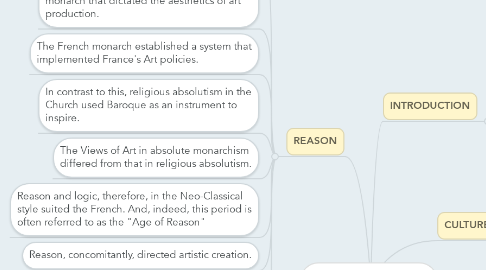NEO-CLASSICISM
by Christian Rey Dante


1. REASON
1.1. Reason, as opposed to intuition, prodded French thinking and decision-making.
1.2. Not only was French thinking was guided by Reason, their government was an absolute monarch that dictated the aesthetics of art production.
1.3. The French monarch established a system that implemented France's Art policies.
1.4. In contrast to this, religious absolutism in the Church used Baroque as an instrument to inspire.
1.5. The Views of Art in absolute monarchism differed from that in religious absolutism.
1.6. Reason and logic, therefore, in the Neo-Classical style suited the French. And, indeed, this period is often referred to as the "Age of Reason"
1.7. Reason, concomitantly, directed artistic creation.
1.8. Reason opposed the spontaneous outpouring of emotion or imagination because art should be logically organize. Emotions should be consciously controlled. Wit and intelligence grows from this rationality and control both form and format
2. AGE OF REASON
2.1. Religious belief, governance, and ethics were grounded on reason
2.2. Philosopher John Locke
2.2.1. He analyze how our minds function, argued for religious tolerance, and contended that government s a "social contract that respected the rights of persons - not the divine rights of kings.
3. INTRODUCTION
3.1. strove to put Reason back in artistic expressions.
3.2. In Neo-Classicism, restraint took the place of wanton creation. The intellect ruled over emotionalism, a principle that distinguished Neo-Classical Art as an intellectual rather than as an emotional movement.
3.3. Order was restored in Neo-Classical from the confusions of Rococo Art.
4. CULTURE
4.1. Culture determines how an artistic syle can be easily assimilated into its life ways.
4.2. Depending on the sensibilities of the culture, artistic style can be well adapted or rejected
5. FRENCH ACADEMY
5.1. Established in the court of the Sun King in 1635 due to Neo-Classical movement.
5.2. Founded by Cardinal Richelieu
5.2.1. was the representative and arbiter in all questions pertaining to French language, literature, and art.

